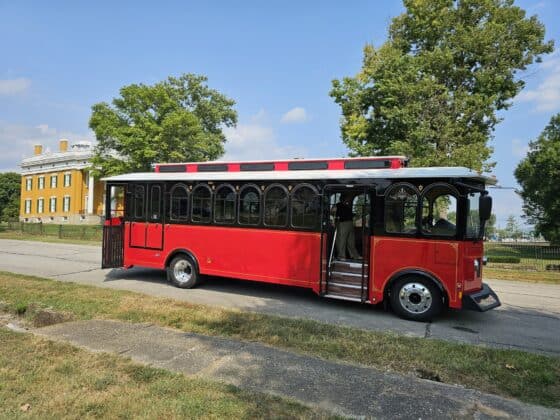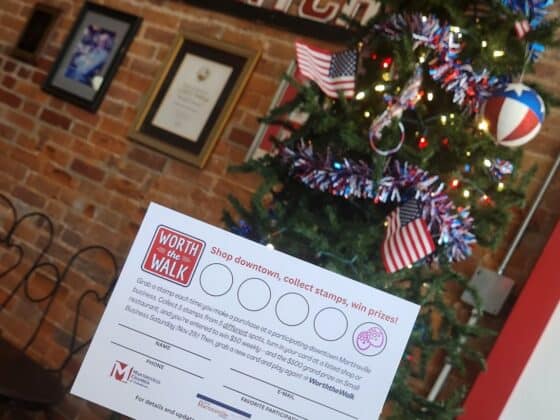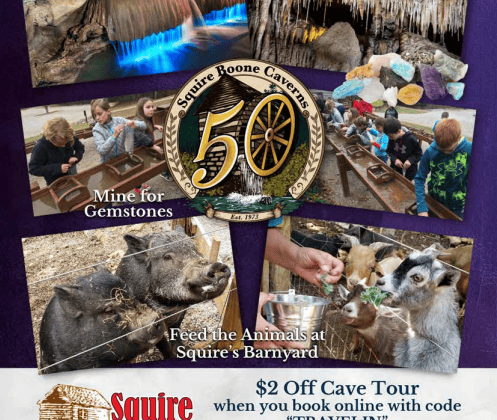By Rebecca Wood
Nine years ago, Jeni Smith was looking for an activity to enjoy with her teenage daughter. Her friend suggested geocaching, a high-tech treasure hunt in which participants use GPS-enabled devices to locate caches (containers) hidden anywhere from city streets to state parks.
Smith admits to being “geographically challenged” and felt certain geocaching would not be a good fit for her family.
“I was the one who got lost on the way to my mother-in-law’s house,” laughs Smith.
But after several outings, Smith’s perspective changed. She enjoyed the “spirit of adventure” she experienced while geocaching.
Today, Smith, a Greenwood native, is a seasoned geocacher and a community volunteer reviewer for geocaching.com.
Geocaching is a game of hide-and-seek that attracts adventure seekers of all ages. To start, an individual hides a cache and then logs the container’s GPS coordinates onto the geocaching.com website. Then, those interested in finding caches refer to the same website and type in a desired location to explore.
Doug Payne, another community volunteer reviewer for geocaching.com and father of three young children, encourages reading the geocache’s description to ensure the excursion fits the family’s needs and capabilities.
“Make sure the cache sounds family-friendly,” Payne recommends. “Find a park that has several geocaches and a playground. After finding several caches, take a break and let the kids play.”
Once a cache route is selected, the only necessary equipment is a GPS unit. Most geocachers use a cellphone either through Google maps or a geocaching app. At some locations, cell phone reception may be tricky; standalone GPS devices can be purchased at sporting good stores or websites.
Geocaching is more about the hunt than the loot.
“When I began geocaching, I expected to find a pirate’s chest,” Smith chuckles. “That’s not what you find.”
The “swag” in a cache varies by the size of the container. Caches may be as tiny as a film canister to as large as a bulky plastic Tupperware. Trinkets to trade may be found inside the containers. (Per geocaching rules, finders must replace any items seized from a cache with things of equal or greater value.) Still other “container-less” caches can be tracked down, as the GPS-coordinates may lead to a unique place, rather than tangible items.
Selecting a geocache location within the state is not a problem. With roughly 21,500 active caches hidden in Indiana, the opportunities to explore are endless.
Close to her Central Indiana home, Smith advises geocaching in Crown Hill Cemetery in Indianapolis where 27 caches can be explored on cemetery grounds.
“Crown Hill Cemetery is a lovely place that is more park-like than cemetery,” Smith says. “There’s a virtual cache at James Whitcomb Riley’s grave which happens to be the highest point in Indianapolis and a has a pretty view of downtown.”
Additionally, Smith suggests geocaching on the Monon Trail where 70 geocaches can be located along the stretch from downtown Indianapolis to Carmel.
Other veteran geocachers share recommendations for cache sites around the state.
Payne, an Evansville native, enjoys the virtual geocache at Evansville’s Willard Library, the oldest public library in the state. The library is rumored to be haunted and includes several ghost cams throughout its facility to catch paranormal activity.The cache’s mission is to locate the cameras and snap photos with a GPS-device.
For those who want to explore outdoors, Payne directs geocachers to Falls of the Ohio State Park in Clarksville.
“It’s a beautiful place, not like anything else in Indiana,” Payne recounts. “The area is full of neat geological features and fossils.”
Heading North, Monica and Tim Lea, Crown Point residents and administrators of the Northwest Indiana Geocaching Facebook Group, tout the Indiana Dunes State Park as a popular geocache site. The couple prompts geocachers to visit the nature center and the many trails throughout the park.
The Leas rave about a geocache at Chesterton’s Vietnam Veterans Memorial Wall, a smaller version of the National Vietnam Memorial in Washington, D.C. There is a four-part cache that takes individuals to four different locations.
Moving East, Bill and Tanya Klauser of Richmond, enjoy geocaching with their grandchildren. Near their hometown, they geocache along Cardinal Greenways, a 62-mile rail trail that runs from Marion to Richmond in East Central Indiana.
The Klausers also urge geocachers in the region to visit Whitewater Memorial State Park in Liberty. The park centers around 200-acre Whitewater Lake and includes plenty of aquatic activities.
For geocaching locales and events held throughout the state, log onto geocaching.com.










